All vegetarians and vegans want to be healthy and happy. They can, unfortunately, face some obstacles on the road to health. While removing meat from the diet and eating lots of vegetables certainly has many health benefits, many real nutritional challenges must be met. It has, however, become an easier task to be a healthy and satisfied non-meat eater of late, due to society’s increased acceptance and accommodation of their diets, and the proliferation of suitable options at their local grocery stores. Do your part by providing healthy and satisfying food options, and you’ll be in good stead with a growing 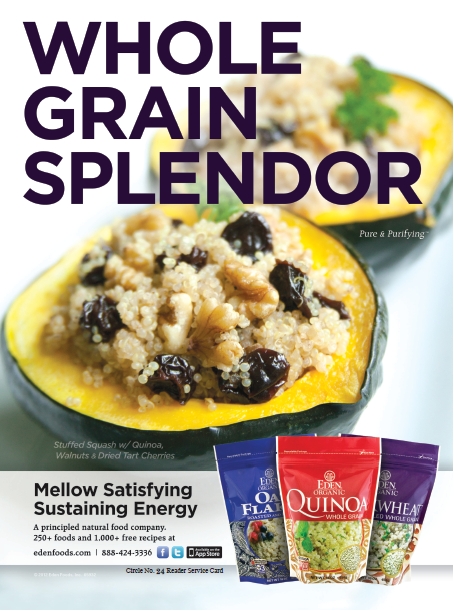 group of clients.
group of clients.
Filling the Gap
Particularly for those newly transitioning away from a typical American diet that is heavy in various kinds of meat, the task of maintaining a vegan or vegetarian lifestyle can easily meet with some nutritional pitfalls. The first order of business is replacing the protein that will be lacking if key diet inclusions are not made consistently. “While some may say that it is difficult to attain enough protein while following a vegan diet, there is significant research to support the fact that a well-rounded plant-based diet can provide more than enough,” says TJ McIntyre, vice president and general manager of Earth Balance, Longmont, CO. He emphasizes the role of foods like nuts and nut butters, as well as soy in particular, for the sizable servings of protein they can offer vegetarians.
These foods, nuts and legumes especially, can also provide certain vitamins, minerals and omega-3 fatty acids that vegetarians may struggle to find elsewhere. “The main options are eating a lot of beans and legumes, or supplementing with powdered protein supplements. Fortified nutritional yeast can be sprinkled on foods to add protein and trace minerals, plus some vitamins, including B12,” says Neil E. Levin, CCN, DANLA, nutrition education manager for NOW Foods, Bloomingdale, IL.
 Soy is a mainstay in many vegetarian diets for its versatility as well as its protein content. Levin notes that we are still discovering its benefits, stating, “The U.S. Food and Drug Administration has approved a qualified health claim based on overwhelming scientific evidence leading to a consensus that soy protein consumption may lower the risk of heart disease. Soy protein even has some intriguing similarities to the famous health benefits of cruciferous vegetables.”
Soy is a mainstay in many vegetarian diets for its versatility as well as its protein content. Levin notes that we are still discovering its benefits, stating, “The U.S. Food and Drug Administration has approved a qualified health claim based on overwhelming scientific evidence leading to a consensus that soy protein consumption may lower the risk of heart disease. Soy protein even has some intriguing similarities to the famous health benefits of cruciferous vegetables.”
He acknowledges that many are allergic to soy or may otherwise wish to steer clear of it. For these individuals, further alternatives are needed. “Green pea protein, which is typically easily digested, non-allergenic, and a complete protein source, has overtaken rice protein as a leading alternative because of recent safety concerns regarding the heavy metal content of rice protein, since rice is unfortunately an efficient collector of certain metals from the soil,” Levin says.
Protein doesn’t have to come in the form of solid food, and non-meat eaters searching for protein often turn to the dairy category. This leads us squarely to milk as an option for vegetarians to help fill the protein void, though it is off limits for vegans. “Incorporating beverages that contain protein is one way to help address this concern. For vegetarians, organic milk can be a great option,” says Sara Loveday, spokesperson for Broomfield, CO-based WhiteWave Foods, parent company of Horizon Organic Dairy and Silk Soymilk. Loveday says each serving of her company’s milk delivers about four grams of protein. “For vegans or vegetarians looking for even more protein, Silk soymilk beverages can be a good choice, with most containing 6.25 grams of protein per serving,” she says, adding that soymilk products often contain more calcium than dairy milk.
Most vegetarians and tofu certainly do not need to make each other’s acquaintance, but David Mintz, president and CEO of Tofutti Brands, Cranford, NJ, reminds us that it is a good source of nutrition. Tofu is high in protein, low in fat, and not much of a burden on the digestive system. “For some 40 million people who cannot digest dairy, it is like ‘being reborn,’” Mintz says.
Many vegetarians put themselves in a double-bind when they prioritize low-fat content in their search for protein alternatives, often piling on top of the already difficult task of avoiding allergens, argues Gael Orr, communications manager, Once Again Nut Butter, Nunda, NY. “I think the challenge for new vegetarians is to realize that healthy fats are not the enemy, in spite of what has been communicated to them in the past,” she says. For others it’s a matter of finding a  taste and form that suits them, while also providing needed protein. Peter “PJ” Sartorio, vice president of ADF Foods USA, South San Francisco, CA, maker of Nate’s Meatless Meatballs, says that consumers can incorporate products like his company’s into pasta dishes, in order to approximate common meals such as spaghetti and meatballs. “We wanted to create fare that is tasty but also supplements the proteins that vegetarians lack in their diets,” he says.
taste and form that suits them, while also providing needed protein. Peter “PJ” Sartorio, vice president of ADF Foods USA, South San Francisco, CA, maker of Nate’s Meatless Meatballs, says that consumers can incorporate products like his company’s into pasta dishes, in order to approximate common meals such as spaghetti and meatballs. “We wanted to create fare that is tasty but also supplements the proteins that vegetarians lack in their diets,” he says.
Protein content is a leading characteristic of whole grains, according to Ray Martin, vice president of sales and marketing for Hodgson Mill, Effingham, IL. He notes that his company’s whole wheat pastas have nine grams of protein per serving. Martin says, “In addition, our organic and gluten-free pastas contain flax, which further enhances their nutritive value. Pastas are a great staple for families that want to encourage their children to adopt a vegetarian or vegan lifestyle.” Whole grains, he adds, are typically high in fiber, and contain manganese and magnesium. “Whole grains are significantly healthier than grains that are overprocessed and therefore void of many of the important components of the grain kernels that add nutritional value,” he says.
Another of his company’s nutritious offerings is buckwheat. “Buckwheat reportedly has more protein than wheat or rice, is low on the glycemic scale and contains flavonoids, which are heart healthy,” Martin says. He also throws in steel cut oats, for their long-recognized heart health and digestion benefits. Steel cut oats also contain potassium, magnesium, B-complex vitamins and antioxidants.
Dietary fiber is a prime component of a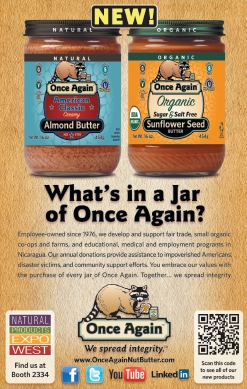 ny vegetable-heavy diet. But that doesn’t mean all vegetarians and vegans get enough of it, as modern diets in general tend to be fiber-deficients, so says Eugene Wang, founder of meatless seafood product maker Sophie’s Kitchen, Sebastopol, CA. He explains that the central ingredient in every product in his company’s line is konjac, a fiber-rich Asian superfood consumed for centuries. It imparts important texture to these substitutes for common seafood, such as shrimp, and nutritionally, it delivers the fiber necessary for efficient digestion. Another nutritional component of Wang’s MSG-free product line is brown seaweed powder. He believes that vegan consumers are increasingly aware of the nutritional benefits of seaweed, including weight control and for digestion, to the point that it has become a valued ingredient in their diets.
ny vegetable-heavy diet. But that doesn’t mean all vegetarians and vegans get enough of it, as modern diets in general tend to be fiber-deficients, so says Eugene Wang, founder of meatless seafood product maker Sophie’s Kitchen, Sebastopol, CA. He explains that the central ingredient in every product in his company’s line is konjac, a fiber-rich Asian superfood consumed for centuries. It imparts important texture to these substitutes for common seafood, such as shrimp, and nutritionally, it delivers the fiber necessary for efficient digestion. Another nutritional component of Wang’s MSG-free product line is brown seaweed powder. He believes that vegan consumers are increasingly aware of the nutritional benefits of seaweed, including weight control and for digestion, to the point that it has become a valued ingredient in their diets.
Enid Weaver, CEO of Bien Padre Foods, LLC, Eureka, CA, points up the importance of vitamin B12 in particular, as one of the only nutrients that can’t readily be obtained from a plant-based diet. She pairs this potential deficiency with the common vegetarian problem of not obtaining enough calories. “Vitamin B12 has to come in supplement form, and calorie deficiencies can be made up with nutrient-rich foods like beans or lentils and whole grains,” she says.
Edible mushrooms, constitute a valuable element in many vegetarian diet routines. Lynn and Michael Monroe, founders of FungusAmongUs, Inc., Snohomish, WA, talk about how mushrooms are more than space-fillers on vegan and vegetarian dinner plates. “They are noted for being low in calories. They are very high in vitamin D and potassium,” Michael says. He also refers to another important factor for many individuals today. “They are very low in sodium. That’s a big plus.” Mushr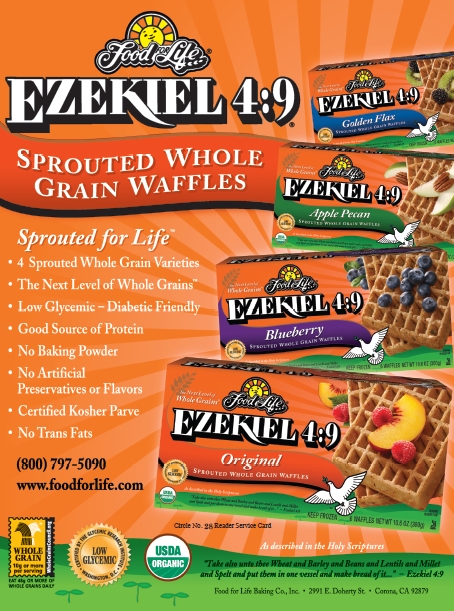 ooms in general are polysaccharide-rich; Lynn says they are flush with beta-glucans primarily. She notes that Maitake mushrooms, for instance, have highly studied health benefits. “It’s a big immune system booster, and it’s delicious.”
ooms in general are polysaccharide-rich; Lynn says they are flush with beta-glucans primarily. She notes that Maitake mushrooms, for instance, have highly studied health benefits. “It’s a big immune system booster, and it’s delicious.”
Eating too much processed food is a habit to be avoided, but one to which some vegetarians unfortunately fall prey, Levin points out. “There is another common danger for vegetarians and vegans: the risk of becoming carbo-tarians; that is, eating an unbalanced diet high in pizza and bread, potatoes, soft drinks or other carbohydrate-heavy foods. This is not uncommon in teenagers and may result in undesirable weight gain,” says Levin. Replacing some of those excess carbs with vegetables and some of the sensible, nutritious choices previously described will go a long way toward balancing the diet.
It should not be taken for granted that vegetarianism and eating a lot of vegetables go hand in hand. “Almost everyone has a limited diet in some way or another,” says GardenChef Paul Wenner, the creator of the Gardenburger who is now launching a line of savory, vegetarian products called Gardenbars. He contends that heavy meat eaters eat too little fresh fruits and vegetables every day. He also says that 80% of Gardenburger customers were found to eat little or no red meat, but were also not consuming enough fruits and vegetables. The 18% of Gardenburger customers that were vegetarians and the 2% that were vegans at the time data were collected relied on such meat alternatives for the “dense protein” portion of their meals. Thou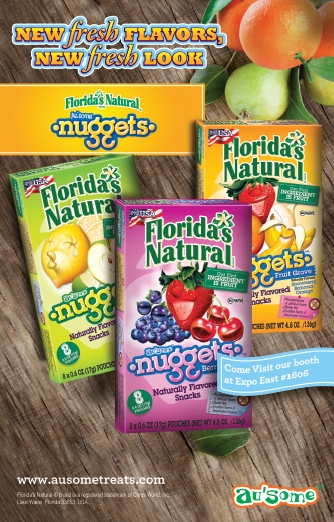 gh they ate more fruits and vegetables than other groups, Wenner says they still did not eat enough. “In all these groups there was a shortage of fresh veggies and fruits, so I think this is the true gap in the diets of many, if not most Americans,” he says, meaning even non-meat eaters may need to boost their veggie intake. Wenner recommends a fresh, five-fruit smoothie or fruit cup every morning for breakfast as a good way to jumpstart fresh food intake for the day.
gh they ate more fruits and vegetables than other groups, Wenner says they still did not eat enough. “In all these groups there was a shortage of fresh veggies and fruits, so I think this is the true gap in the diets of many, if not most Americans,” he says, meaning even non-meat eaters may need to boost their veggie intake. Wenner recommends a fresh, five-fruit smoothie or fruit cup every morning for breakfast as a good way to jumpstart fresh food intake for the day.
It should not be forgotten, meanwhile, that a diet with no meat has an obvious upside. “The benefit of meat-free eating is the sensible management of fat, particularly saturated fat and calories,” says David Wilson, general manager of Quorn Foods Inc., Riverside, CT. The high-fiber, satiating meals typically consumed by vegetarians mean they are getting full faster and are having a more satisfying eating experience than for those stuck with “diet foods.” While supplementation is often necessary, at least some essential minerals and vitamins including B12 and iron can be found in foods like spinach, kale and other vegetables, Wilson says.
What Are You Offering?
Vegans and vegetarians are a determined bunch. If their favorite stores don’t stock what they need to meet their diet plans, they will certainly look elsewhere and otherwise will find a way. It’s up to you to keep them satisfied, and ideally to enrich their food experiences by offering them even more than they bargained for.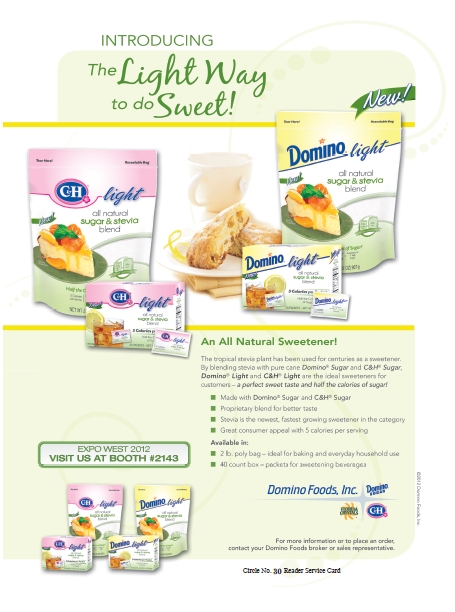
A large place for whole grains on grocery shelves is essential to vegetarians. Martin calls them the base of the vegan/vegetarian food pyramid. “The wonderful thing about whole grains is that they’re relatively inexpensive, they’re packed with nutrients and the all-important protein many vegetarians and vegans don’t get enough of, and they can be used in recipes for any meal of the day,” he says. For families trying to get young vegetarians started on whole wheat pasta, he suggests beginning with milder tastes, such as his company’s whole wheat angel hair, thin spaghetti or egg noodles. “We recommend you ease into whole wheat pastas if you have particular eaters. Often, those used to a diet of white pasta find transitioning to whole wheat pasta easier by starting with the milder-tasting varieties,” Martin says.
Since vegans and many vegetarians won’t be eating fish, omega-3s in large quantities can be hard to come by. And as anyone that’s tried to locate one can attest, there aren’t exactly a plethora of vegan omega-3 supplements on the market. That’s why Loveday says her company’s organic milk fortified with a vegetarian source of omega-3 DHA can be a great option for retailers to afford customers. “Most other organic milk products with DHA omega-3 use a fish-based form of the nutrient,” she says.
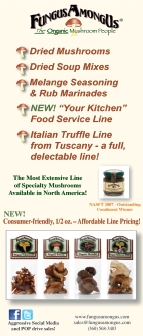 Wenner’s new savory meal bar line represents another product trend: it’s the kind of complete nutrition many vegetarians are looking for, in a convenient form. He says the line will represent cuisine from around the world, with product names including American, Indian, Italian, Japanese and Mexican Savory. “Each contains nine veggies that are custom to the cuisine,” Wenner says.
Wenner’s new savory meal bar line represents another product trend: it’s the kind of complete nutrition many vegetarians are looking for, in a convenient form. He says the line will represent cuisine from around the world, with product names including American, Indian, Italian, Japanese and Mexican Savory. “Each contains nine veggies that are custom to the cuisine,” Wenner says.
North American consumers are currently experiencing an awakening to the culinary options that edible mushrooms offer. The Monroes explain that starter packs of mushrooms, now available from their company in bulk, dried form, may be a good way for retailers and their customers to dive into the category. They say their company offers nutritional information and vegan and vegetarian recipes that utilize mushrooms in various ways. The Monroes receive feedback about their customers’ enjoyment of the quality and texture of the mushrooms, and how suited mushrooms are to many different types of meals. “We’re always looking to add to that, so we can expand their culinary experience,” Michael says.
Mushroom mélanges can be added to many dishes including soups, Lynn says, stating, “It’ll add flavor to a lot of the bland vegetarian recipes that you have.” Part of the vegetarian appeal of mushrooms lies in their adaptability. “They are so compatible, because you have a range of very mild [tastes], from cremini, button-type mushrooms to a lot stronger ones like shitake. There’s such a range from mellow to more dramatic that you can pair them up with just about anything,” Lynn says. The vegetarian’s mushroom repertoire can also include truffles for dessert, and the medicinal reishi mushroom as an ingredient in soup and other dishes.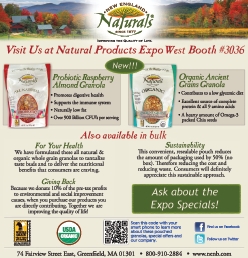
The gluten-free market has gone from being trendy to become a phenomenon, and there is significant overlap with the desires of vegan and vegetarian shoppers to be found here. “Mushrooms are gluten-free and non-dairy, so it’s a natural fit into the trend. It’s funny that mushrooms fit into the most recent trends perfectly, but it’s probably one of the top ancient superfoods,” says Michael Monroe.
Another product attribute many non-meat eaters are after these days is non-GMO certification. Many of the same consumers that choose to remove meat from their diets for health or ethical reasons are also wary of genetic modification in common foods. Wang of Sophie’s Kitchen says some of his company’s products are Non-GMO Project verified, and soon the whole line will follow suit. Another trend for retailers to follow, says Wang, is reflected in the fact that “more and more people are coming to us to thank us for making these products that are soy free.” All but one of the company’s seafood substitute products is soy-free. For various reasons, including health concerns over too much soy and worry over GMO contamination, many of your vegan or vegetarian  clientele may wish to avoid soy, so being able to point to soy-free products may come in handy.
clientele may wish to avoid soy, so being able to point to soy-free products may come in handy.
I can’t believe it’s not meat! To see the proliferation of meat substitutes and alternatives of all shapes and sizes, all one needs to do is step into a grocery aisle. Some of these products aim to replicate, to the greatest degree possible, the taste and texture of familiar meat-based meals. Others may mimic the form of a meat product like hamburger, but boast primary ingredients that vegetarians know and love, like mushrooms or whole grains, and taste nothing like their meat counterparts. “There is a vegan product alternative for pretty much every animal-derived food out there. From milk to meat to cheese, almost every natural foods store has plentiful substitution options,” says McIntyre, adding that Earth Balance products can replace many traditional dairy staples in vegan diets, including milk, butter and mayonnaise.
Often, the appeal of a meat substitute for vegans and vegetarians is the familiarity of approximating food they used to eat and enjoy, or it’s the experience of eating something that is similar in form to what their meat-eating friends enjoy. It can also be something of a practical convenience, in allowing non-meat eaters to fit in better with the taco night or barbecue plans of friends and family. “Having food that is outwardly similar to traditional meat-containing foods may be enough to help a vegetarian or vegan fit in, without going all out for matching flavors and textures,” says Levin.
According to Wilson, consumer research shows that many vegans and vegetarians balk at the idea of wanting a meat analogue in their diet. Certainly, these products are not for everyone, but these individuals may gravitate toward hesitant meat alternatives that fixate more on healthy ingredients than on replicating the experience of meat. Wilson explains that the popularity of many meatless burger substitutes is due to their successful imitation of the succulent, meaty textures and flavors of beef. These products often use ingredients like soy, pea or wheat protein, and he mentions his company’s Quorn among these ingredients. “Ground beef analogues are also hugely popular. Replacing beef for Quorn grounds would save on calories and fat, eliminate saturated fat, and make great chili, meatballs and bolognese sauces,” he says.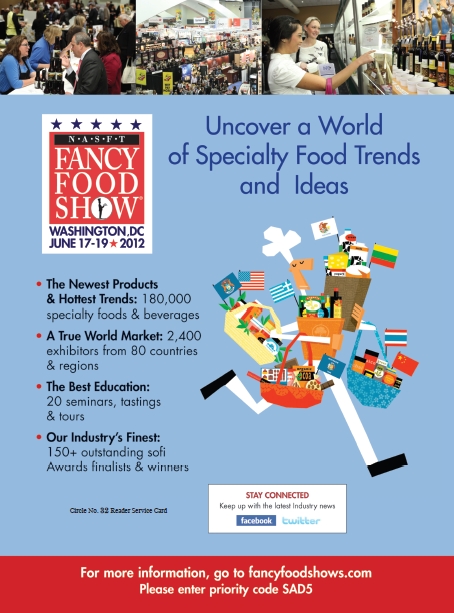
The technology and innovation that has gone into meat substitutes has advanced over the years, according to Mintz. Now, the quality and taste of these products more closely resembles meat in many cases. “Besides the traditional meat replacements (i.e., burgers), products now exist that emulate the taste and texture of chicken, sausage, hot dogs and fish. Combined with other ingredients, such as sauces, you can get a ‘traditional’ meat meal that not only satisfies the meat craving in you, but is also good for you,” Mintz says. Wang acknowledges that no product, his company’s included, is going to be for everyone on the planet. But for those vegans and vegetarians that still enjoy everything about meat except the meat aspect, certain substitutes can be a perfect fit. Says Wang, “We’ve found that a lot of the new vegans, a lot of people allergic to seafood, and a lot of new moms like our product very much. They need something like this.”
Be More Approachable
Times have changed for vegetarians and vegans, that’s for sure. Levin describes his experiences as a young vegetarian in the 1970s. Making a veggie burger, he says, took careful planning and an entire day of work, from ordering soybeans in bulk from the local food co-op to rinsing and soaking them overnight. If it’s a more convenient and accommodating world for these individuals today, it’s at least in part because retailers and product makers have made life easier on them.
in bulk from the local food co-op to rinsing and soaking them overnight. If it’s a more convenient and accommodating world for these individuals today, it’s at least in part because retailers and product makers have made life easier on them.
Sartorio says there are simply more choices now, and in particular, people are having an easier time finding protein-packed food without turning to meat sources. “Additionally, vegetarian and vegan products are more flavorsome now, which makes it simpler to adapt to that lifestyle,” says Sartorio. The increase in the number of eager at-home chefs, and the introduction of more convenient, fresh foods to grocery aisles has also lightened the burden of limiting one’s diet. “It’s easier to find food replacements for cooking, so people who do convert to the vegetarian lifestyle can make simple changes without compromising texture, nutrition and flavors,” says Orr.
There have been some changes in more recent years regarding the makeup of the vegetarian community, and this has caused change in the way products are marketed. Wenner recalls the introduction of Gardenburger Ribblets to the market, and the strong attention it drew from men for what seemed like the first time since the product line was introduced in 1985. “Up to that point, 90% of our 29 products were purchased by woman,” Wenner says. This reflects a recent emphasis on including the male vegetarian community in marketing and product development efforts, to coincide with the trend of more men adopting the diet.
the product line was introduced in 1985. “Up to that point, 90% of our 29 products were purchased by woman,” Wenner says. This reflects a recent emphasis on including the male vegetarian community in marketing and product development efforts, to coincide with the trend of more men adopting the diet.
The trend in finished food products toward fortification with extra nutrition, especially hot nutrients like omega-3s, finds a welcoming audience in vegetarians and vegans. “I think that vegetarian athletes (being one of them myself) are looking for quick, highly nutritious fortified energy foods, such as power bars, powdered mixes to put into smoothies, shakes, soups and stir fries, that are not overloaded with sweeteners, highly processed or contain preservatives,” says Orr. A vegetarian’s reliance on fortified foods should not displace their focus on food in its basic element: fresh and packed with the nutrition Earth intended. “Retailers should look at whole foods and make them more convenient. Semi-prepared and pre-prepared foods are what today’s vegetarians need,” says Weaver, bringing the element of convenience into play as well. Shoppers are more likely to eat healthy when it’s made easy for them, and this holds true with many vegans and vegetarians.
Sartorio contrasts consumer preferences of yesteryear with now. “Growing up, frozen foods were very popular items to purchase because of the convenience factor. Now, there is still a growing trend to make dishes that are easily accessible, but families want to be more involved in the preparation process by having directions to follow, etc.” Vegans and vegetarians, too, enjoy being hands on with their food, so Sartorio says their options should be presented similarly to the rest of the frozen items and other food products in your grocery aisles. WF
Published in WholeFoods Magazine, March 2012









